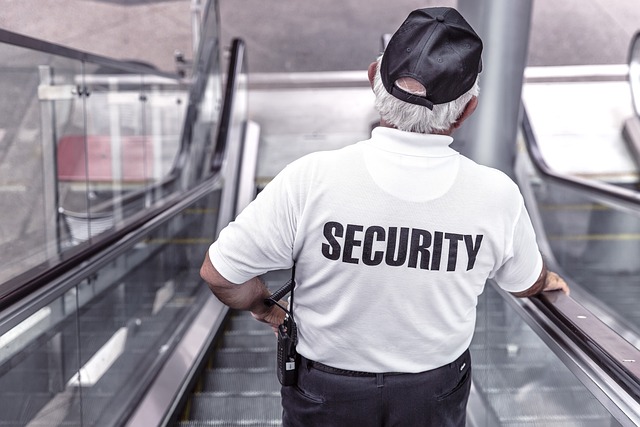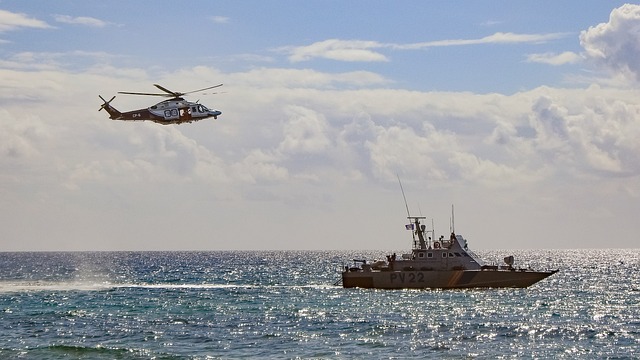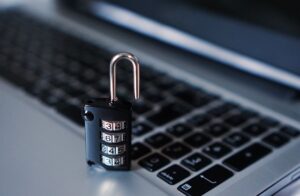High-intensity light technologies have revolutionized the way security personnel detect intruders, offering unparalleled clarity and precision in low-light conditions. This article delves into the transformative role of flashlights for security personnel, particularly within controlled environments, and their pivotal impact on visual detection capabilities. We will explore the efficacy of these lights, the scientific principles that make them effective, advanced features to consider in security flashlights, real-world applications through case studies, training methods for enhancing their use, and future advancements in intruder identification technology. Join us as we shed light on the critical importance of high-intensity light in maintaining safety and security across various settings.
- The Efficacy of High-Intensity Light in Enhancing Visual Detection for Security Personnel
- Understanding the Science Behind High-Intensity Light and Its Impact on Intruder Identification
- The Role of Flashlights For Security Personnel in Controlled Environments
- Advanced Features in Modern Flashlights: What to Look for in Security Equipment
- Case Studies: Real-World Applications of High-Intensity Light in Intruder Detection
- Training Security Staff with High-Intensity Lights: Best Practices and Techniques
- Future Developments: The Evolution of Flashlights For Security Personnel and What's Next for Intruder Identification Technology
The Efficacy of High-Intensity Light in Enhancing Visual Detection for Security Personnel

High-intensity light sources play a pivotal role in enhancing the visual detection capabilities of security personnel during intruder identification and apprehension. Flashlights for security personnel equipped with high-intensity beams can significantly improve situational awareness by illuminating dark environments, revealing intruders who might otherwise remain concealed. The focused light from these flashlights acts as a powerful tool, penetrating shadows and highlighting suspicious activities or individuals. This immediate brightness not only startles potential threats but also allows for clearer observation of their actions, making it easier to assess the situation quickly and decisively.
Moreover, the efficacy of high-intensity light is further underscored by its adaptability across various scenarios. Security personnel can employ a flashlight to create temporary disorientation or as a deterrent, deterring intruders who are averse to the bright light and its potential exposure. The high lumen output also aids in capturing clear visual evidence, which is crucial for post-incident investigations and can be pivotal in legal proceedings. Thus, flashlights for security personnel are not just a tool for identifying intruders but a multifaceted asset that supports the entire spectrum of security operations in low-light or darkness.
Understanding the Science Behind High-Intensity Light and Its Impact on Intruder Identification

High-intensity light sources, commonly utilized in flashlights for security personnel, are pivotal tools in the realm of intruder identification and security enforcement. These powerful beams, often referred to as tactical lights, operate on principles of photon emission and optical amplification. When activated, they emit a concentrated beam of light that can temporarily disable an individual’s vision, disorienting them and allowing for clear visibility of the intruder’s features. This disorientation effect is particularly useful in high-stakes situations where immediate identification and assessment are critical. The science behind these lights involves the physics of light generation and manipulation; high-intensity discharge (HID) lamps, LEDs, and laser technology are some of the technologies employed to produce these bright lights. Security personnel can use flashlights for security purposes to illuminate an area or to focus a beam directly on a subject, revealing details that may otherwise be obscured in low light conditions. The high luminosity not only enhances visual acuity but also captures high-resolution images that can be used for post-incident analysis and identification of individuals, thereby bolstering security operations and facilitating rapid response to potential threats.
The Role of Flashlights For Security Personnel in Controlled Environments

Flashlights for security personnel serve as indispensable tools in controlled environments, providing a reliable source of illumination that enhances situational awareness and threat detection. The intense beams of high-intensity flashlights penetrate darkness effectively, revealing intruders or potential threats where shadows might otherwise conceal them. Security teams rely on these devices to conduct thorough patrols and respond swiftly to any signs of unauthorized activity. The durability and advanced lighting technology of modern flashlights ensure they can withstand the rigorous demands of a security operation, remaining operational even in harsh conditions. Furthermore, the tactical features incorporated into these flashlights, such as variable intensity settings and specialized beam patterns, enable security personnel to adapt their light output to various scenarios, from discreetly checking corners to temporarily blinding an aggressor during critical moments. The strategic deployment of flashlights for security personnel is a testament to their enduring value in maintaining the safety and integrity of controlled environments.
Advanced Features in Modern Flashlights: What to Look for in Security Equipment

When selecting flashlights for security personnel, it’s crucial to prioritize advanced features that enhance visibility and safety during intruder identification. Modern flashlights have evolved significantly, offering security professionals tools that are far more sophisticated than their predecessors. High-intensity light sources, such as LED or laser technology, provide a piercing beam capable of disorienting potential threats while illuminating dark environments with exceptional clarity. The adjustable intensity settings allow for a balance between a focused spotlight for long-distance identification and a broader, diffused beam for close-quarters work. Additionally, features like strobe capabilities can be used as a non-lethal means of disorienting an intruder or signaling for assistance.
Durability is another key factor; security flashlights are often subject to harsh conditions and rigorous use. They should be constructed with high-quality materials, such as aerospace-grade aluminum, to withstand impacts and resist corrosion. Impact resistance is also vital, ensuring that the flashlight remains operational even if dropped or struck. Furthermore, weatherproofing against water and dust intrusion is essential for all-weather reliability. In terms of battery life, the best flashlights for security personnel feature high-capacity power sources with efficient energy use, offering extended operation during critical situations. Advanced features such as thermal regulation prevent overheating, ensuring consistent performance throughout prolonged use. When investing in a flashlight for security purposes, consider these elements to ensure you have a reliable tool for identifying intruders and maintaining safety in any environment.
Case Studies: Real-World Applications of High-Intensity Light in Intruder Detection

High-intensity light sources, particularly advanced flashlights for security personnel, have become indispensable tools in intruder detection and security operations worldwide. Take, for instance, the case study of a high-profile event where real-time surveillance was critical. Security teams employed state-of-the-art flashlights equipped with intense beam capabilities to swiftly identify individuals attempting to gain unauthorized access to sensitive areas. The focused light not only penetrated through obscuring factors like darkness or smoke but also revealed fine details on the intruders’ persons, aiding in immediate and accurate assessment of potential threats.
Another notable application is in residential security systems, where homeowners have integrated high-intensity flashlights into their defense protocols. A case in point is the enhanced ability of home surveillance teams to pinpoint individuals lurking around properties during nighttime hours. The high-lumens flashlights used in these instances not only serve to disorient potential intruders but also provide security personnel with a clear view to assess the situation, determine the intruder’s intent, and take appropriate action swiftly and decisively. These real-world applications underscore the importance of reliable high-intensity light sources as a vital component in modern intruder detection systems, making flashlights for security personnel a key investment for maintaining safety and security across various settings.
Training Security Staff with High-Intensity Lights: Best Practices and Techniques

Flashlights for security personnel play a pivotal role in enhancing visibility during critical situations, making them indispensable tools in the field of intruder identification and apprehension. Training security staff to effectively utilize these high-intensity lights is not merely about handling the equipment; it encompasses understanding the environmental conditions and situational variables that influence light deployment. Best practices in training involve a combination of theoretical knowledge and practical application, ensuring that security personnel are well-versed in the capabilities and limitations of their flashlights.
Incorporating high-intensity light training into security protocols allows for better detection of intruders, as the concentrated beams can illuminate dark spaces and reveal subjects at a distance. This advanced form of lighting not only aids in identifying individuals but also deters potential threats by creating a disorienting effect that is often unanticipated by intruders. Techniques such as using light to signal, create temporary blindness for self-defense, or to highlight an escape route are essential skills for security staff to master. Effective training must include exercises that simulate real-life scenarios, providing officers with the confidence and proficiency needed to respond appropriately when faced with potential threats in low-light conditions. Practical drills should be coupled with regular assessments to ensure continuous improvement and adherence to the highest standards of security practice.
Future Developments: The Evolution of Flashlights For Security Personnel and What's Next for Intruder Identification Technology

Flashlights for security personnel have undergone significant advancements, transitioning from traditional incandescent models to highly efficient LED technology. The future of flashlights in security applications promises even more sophisticated enhancements. Researchers and manufacturers are exploring the integration of augmented reality (AR) into flashlight designs, which could overlay critical data onto a user’s field of vision during an intrusion event. This innovation would enable security personnel to not only illuminate dark spaces but also to identify potential threats with greater precision through real-time data and thermal imaging.
Furthermore, the evolution of flashlights is set to include adaptive lighting systems that respond to environmental conditions, optimizing brightness and color temperature for specific tasks or to avoid alarming intruders unnecessarily. The integration of artificial intelligence (AI) algorithms into these devices could enable them to autonomously identify intruders based on behavioral patterns and facial recognition, providing security personnel with advanced warning systems. These advancements in flashlight technology are poised to significantly enhance the capabilities of security personnel, ensuring more effective and efficient intruder identification and response strategies.
